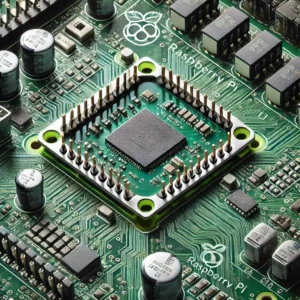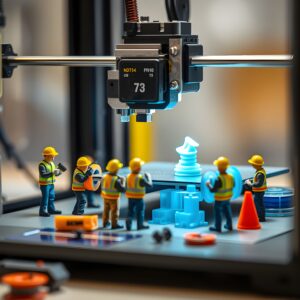Guide: Building a 3D Printer with Raspberry Pi

1. Introduction to DIY 3D Printing with Raspberry Pi
Begin with a brief history of 3D printing and its evolution from high-end industrial machines to accessible DIY projects. Introduce the Raspberry Pi as a cost-effective, versatile solution for enthusiasts looking to build their own 3D printer without purchasing an expensive control board. Discuss the advantages, such as remote accessibility, low cost, and compact size, and touch on how Raspberry Pi opens up new possibilities for customization and control. Mention popular uses for DIY 3D printers, from prototyping to crafting unique parts.
2. Materials Needed for Building a 3D Printer
List essential components for building the 3D printer, with a focus on the Raspberry Pi. Detail each item with descriptions and recommendations:
- Raspberry Pi Model: Recommend the latest version (such as Raspberry Pi 4) for improved performance and network speed.
- 3D Printer Kit: Discuss affordable, customizable 3D printer kits that work well with Raspberry Pi.
- Power Supply: Mention the importance of a reliable power source.
- Software: Include OctoPrint as the recommended software, along with any plugins for enhanced features.
- Accessories: Suggest optional components like cameras (for monitoring prints remotely) or touchscreens for ease of control.

3. Setting Up the Raspberry Pi for 3D Printing
Detailed steps for software setup:
- Installing OctoPrint: Explain how to install OctoPrint on Raspberry Pi, covering the steps from downloading the image to flashing it onto an SD card. Mention alternatives like Repetier if relevant.
- Connecting the Raspberry Pi to Wi-Fi: Provide instructions for configuring the Raspberry Pi’s Wi-Fi settings to enable remote control.
- Initial Configuration: Walk readers through initial setup and calibration within OctoPrint, including connecting to the 3D printer.
- Essential Plugins: Introduce must-have plugins (e.g., OctoLapse for time-lapse videos, Bed Level Visualizer for calibration).
Include screenshots or images to help visualize each step.
4. Assembling and Configuring the 3D Printer Dive into hardware integration and calibration:

- Assembling the Printer: Describe how to connect the Raspberry Pi to the 3D printer hardware. Offer tips on managing wiring, ensuring secure connections, and troubleshooting.
- Calibration Steps: Cover calibration from leveling the print bed to setting the optimal extrusion rate and temperature controls.
- Test Printing: Guide readers through a test print to ensure everything works as expected. Share tips for common first-test issues, such as adhesion problems or filament feed issues.
This section should include visuals or diagrams to make complex setups easier to follow.
5. Common Troubleshooting Tips and Advanced Upgrades
Address troubleshooting common issues and offer advanced upgrade ideas:
- Troubleshooting: Outline solutions to common connectivity issues (like Pi failing to connect to the printer) and print quality issues (like filament clogging).
- Upgrades: Suggest options to expand the printer’s functionality, such as adding a camera for remote monitoring, installing a touchscreen for easy control, or setting up automated bed leveling for higher-quality prints.
- Safety Tips: Emphasize the importance of power management, cooling solutions, and keeping cables secure.
6. Conclusion and Next Steps
Summarize the key benefits of using a Raspberry Pi for DIY 3D printing and encourage readers to share their builds or join online communities. Mention the potential for future projects, such as integrating more sophisticated features like multi-material printing or IoT functionality.




